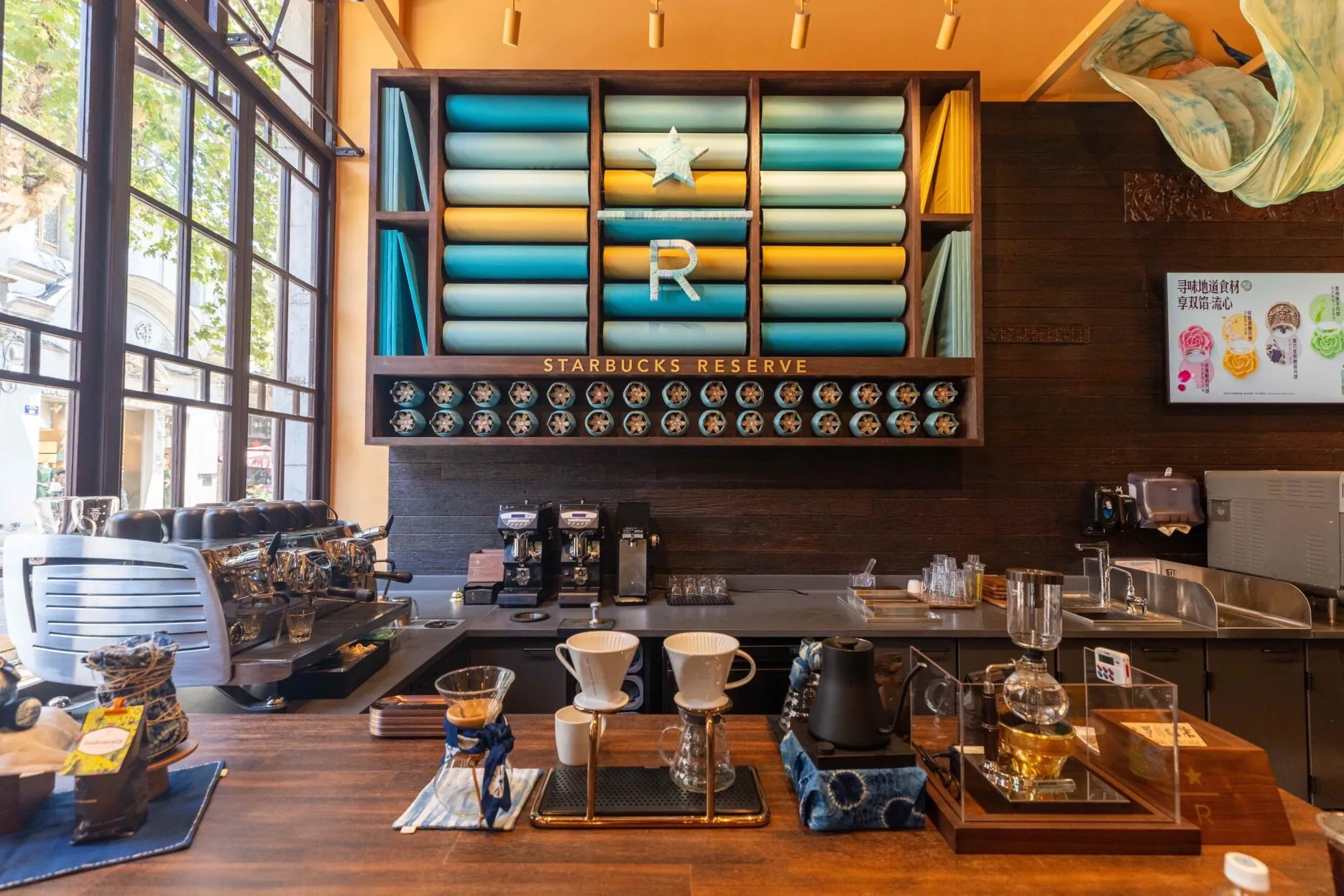American coffee goliath Starbucks continues to localise in China. Most recently, the chain opened its fifth intangible cultural heritage (ICH) concept store in the country and its first in Zhejiang Province, on Hefang Street in Hangzhou. It is also a Starbucks Reserve location, known for providing high-quality “third spaces” the company is known for.
The brand takes on the concept of the “Hangzhou Leno” (杭罗, hangluo) weaving technique, an ancient silk craft originating in Hangzhou. The branch is located in the historical site of the Zhang Yunsheng Department Store, the first department store in Hangzhou. The store was founded over 200 years ago, but the building was built in 1926, making it nearly 100 years old. Designed in a Western style, it perfectly encapsulates Starbucks’s image. Hangzhou Leno fabric would have been sold there back in the day.






For the concept store, Starbucks recruited Hangzhou Leno weaving technique inheritor, Hong Guizhen (洪桂珍) and Her Fuxing Leno (福兴杭罗) team, and partnered with young Chinese artists to create 3 textile art installations. It also includes a hybrid craft, inviting the Bai tie dye inheritor to dye Hangzhou Leno with the technique. Not only are the craftsmanship and texture of the fabric displayed, but the store also invites visitors to learn more about this traditional craft’s contemporary spin.
With exclusive drinks inspired by Hangzhou’s tea culture and matcha, as well as exclusive sleeves and paper bags, Starbucks takes hyper-localisation seriously. Not only did Starbucks create an artistic “third space” as a Reserve branch, but the regional intangible cultural heritage also brings the international brand closer to locals while attracting travellers.
Need to boost your China strategy? Dao Pro delivers bespoke insights on marketing, innovation, and digital trends, direct from Chinese sources. Find out more from our Dao Strategy Team here.









